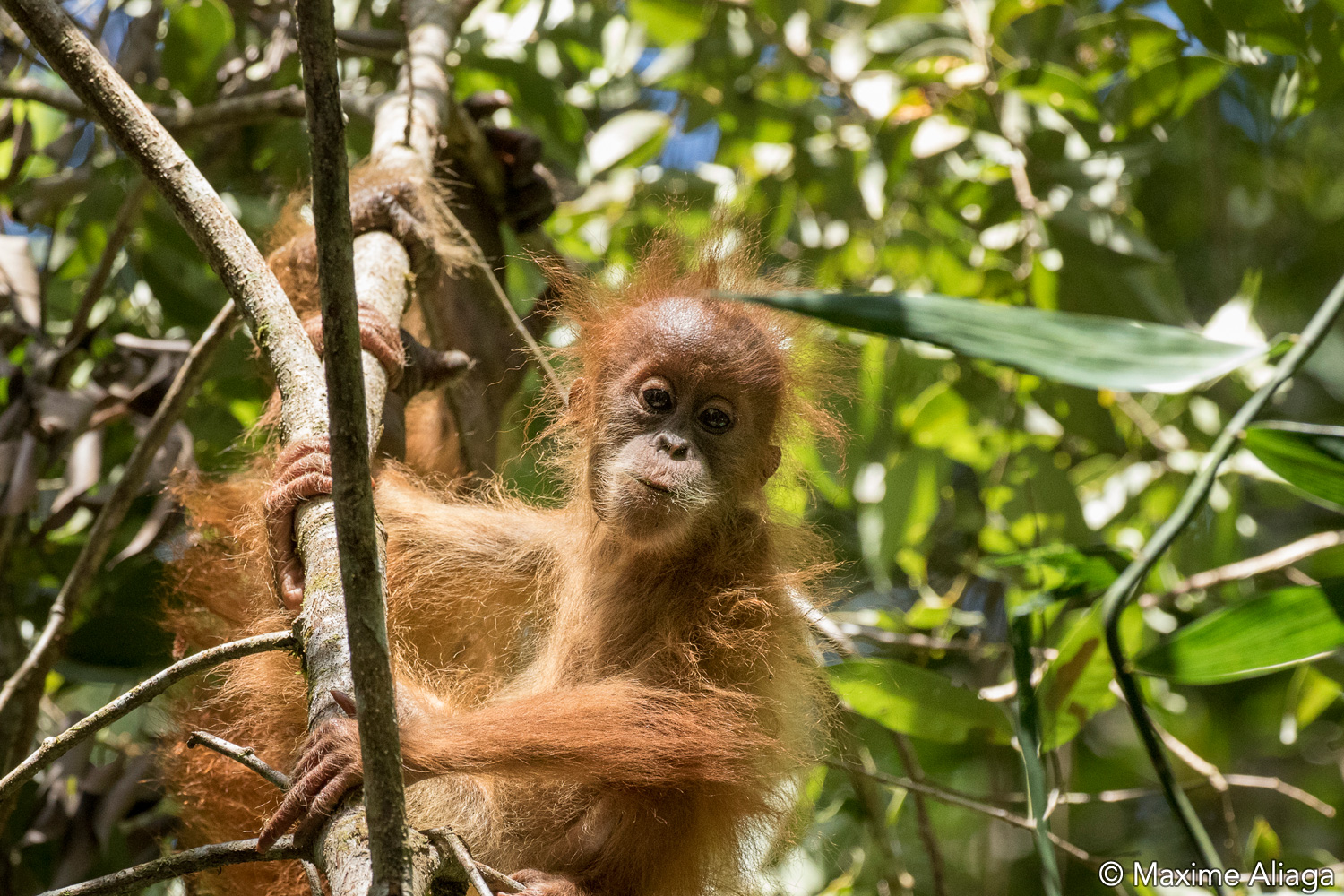- With an estimated population of less than 800, the newly described Tapanuli orangutan is already at risk of extinction due to habitat destruction and fragmentation.
- The Indonesian government will come up with a strategy to protect the orangutan, including the establishment of protected forest areas and wildlife sanctuaries.
- The government will also review a plan to build a hydroelectric plant in an area with the highest known density of Tapanuli orangutans.
The Indonesian government is rushing to protect the newly described Tapanuli orangutan (Pongo tapanuliensis), a species already regarded as the most endangered great ape on the planet.
The discovery that this isolated population of an estimated 800 orangutans in northern Sumatra, Indonesia, is a distinct species from both the Sumatran and Bornean orangutans has been hailed as a major breakthrough. The Tapanuli orangutan is the first new great ape species to be described since the bonobo in the Congo Basin in 1929, and its total estimated population makes it the world’s rarest.
Despite the initial elation of the new discovery, the Tapanuli orangutan is already in trouble as it is under threat from the expansion of human development, according to a study published in the journal Current Biology, which first described the new orangutan species.

The species lives in pockets of the 1,338-square-kilometer (516-square-mile) Batang Toru ecosystem, in North Sumatra province. While the mountainous topography of the area makes it unsuitable for farming, large swaths of the orangutans’ habitat are at threat from other forms of exploitation.
Chief among these is the development of a 510-megawatt hydroelectric plant in an area with the highest known density of Tapanuli orangutans. The researchers who described the new species say the project could potentially affect 8 percent of the ape’s habitat if completed.
More importantly, it will thwart the last chance to build forest corridors connecting the fragmented habitats, which might lead to inbreeding among the isolated groups of orangutans and the eventual extinction of the species.
That fragmentation has already cut off a group of around 17 orangutans in a small patch of forest south of the larger eastern and western blocks of the Batang Toru carved up by roads.
“These 17 orangutans could go extinct as time goes by,” said Ian Singleton, director of the Sumatran Orangutan Conservation Program (SOCP) and co-author of the Current Biology paper. “There should be more than 250 orangutans [in a single population] for them to stand a chance to survive in the long run. Less than that, they could go extinct.”
The Indonesian Ministry of Environment and Forestry has acknowledged the issues and vowed an assessment of the potential impact from the power plant project on the orangutan habitat. A top official said the ministry would also be more judicious about approving future development projects in the region.
Wiratno, the ministry’s director general for ecosystem and natural resource conservation, said that to prevent further defragmentation of the habitat, he would try to ensure there were no more “big-scale investment developments which clear land in a massive way.”
As for the power plant, Wiratno said, “We’ll see the impact first, whether there is direct impact or not,” before deciding on whether to allow it to proceed.

The ministry, which oversees conservation efforts nationwide, will review all spatial planning maps in the Batang Toru ecosystem, Wiratno told reporters on the sideline of a press conference in Jakarta. “We will make a very detailed land-use planning there,” he said.
The review aims to assess the impact of any economic activities and development projects in order to create a conservation strategy that might include the creation of protected forest areas or wildlife sanctuaries for the Tapanuli orangutan.
Some of the orangutans live in areas zoned for conversion, also known as APL. These areas cover 100 to 150 square kilometers (39 to 58 square miles), or 15 percent of the Tapanuli orangutans’ habitat. Because of their APL designation, these areas are not protected and thus are at risk of encroachment or being cleared for industrial purposes.
“These habitats are not secure yet because they’re still zoned for conversion,” Singleton said. “So each hectare and each individual is important [to protect].”
Wiratno said the ministry was considering whether to convert these areas into either protected forest areas or wildlife sanctuaries to ensure the protection of the orangutans. He added that once protected, they would exempt from any logging activity.
Changing the designation would require spatial planning revision, which Wiratno said would be processed soon through meetings between the ministry and the North Sumatra provincial government.

In addition to a spatial planning overview, the ministry will also come up with a conservation plan that involves all stakeholders in the region. This will include a community patrol to ensure there is no poaching in the habitat, as well as looking at the possibility of implanting tracking chips into the orangutans’ teeth to monitor them, Wiratno said.
Singleton agreed that it was important to have a plan in place that all parties could agree on.
“The status of the habitat, whether it’s a sanctuary, an APL area or a protected forest, is not that important,” he said. “What’s important is there’s a system that’s supported by all stakeholders.”
The provincial government has also chimed in, with North Sumatra Governor Tengku Erry Nuradi saying his administration would soon issue a local regulation for the protection of the Tapanuli orangutan.
Banner image: A Tapanuli orangutan (Pongo tapanuliensis) in Sumatra. Photo by Maxime Aliaga.
